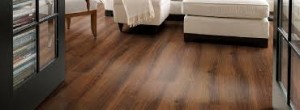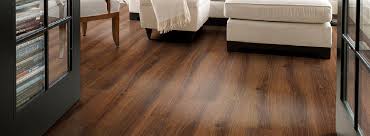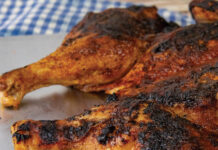
Laminate flooring mimics the look of traditional woods while offering easy installation and lasting durability. At first glance, it can be difficult to spot the difference between hardwoods and laminate flooring. What appears to be a natural wood grain pattern is really a thin layer of decor paper (a photographic image) under a tough-as-nails protective film that is glued and pressed to a high-density backing board. Laminate Flooring comes in an array of wood effects as well as stone and ceramic effects.
Laminate floorings main advantages are that it is easy to install, is very hardwearing and relatively inexpensive compared to real hardwood flooring. Some find that using a steam cleaner could be a good way of keeping the floor clean.
Laminate flooring is a floating floor, which means it does not fasten directly to the sub-floor. Instead the planks are clicked together. This enables the floor to be fitted fast and with no real mess.
Laminate flooring has been around in Europe for around 15 years and has seen massive growth in the past few years. In 2004 over 750 million square meters of laminate flooring was sold worldwide this was an increase of 13% on the previous year. The biggest growth market is in the US with an impressive growth rate of 25%.
What Is Laminate Flooring Made from?
Laminate flooring is made up of four layers. The bottom layer is the stabilizing layer; this is what gives the laminate floor its stability. It is made up of moisture resistant resins.
Above this there is the core layer; this is made up of high density fiberboard (H.D.F.). This is saturated in resins to make it extremely hard. Most manufactures also add a moisture resistant resin to the core. This is important as it helps keep the flooring protected against moisture penetrating the boards.
On top of the core layer is added a high strength paper along with the decorative paper. It is this decorative paper which gives the laminate flooring its individual appearance, ranging from highly authentic wood reproduction, ceramic or stone designs.
The top wear layer is provided by the melamine resin, a highly wear resistant material that makes laminate flooring so hard wearing. This top layer is very similar to the top layer on counter or kitchen work tops but is usually around 40% stronger. This makes the laminate flooring highly resistant to scratches, burns, dent’s, stains, etc.
There are a lot of laminate flooring manufactures who have products in the market place, each saying theirs is the best. Our advice is to stay with the leading ones these are QUICK-STEP, ALLOC, PERGO, BRUCE, and KRONOTEX. Theses manufactories have been around a long time and offer quality products that you can trust.
How Does Laminate Flooring Fit Together?
Most laminate floors today fit together with a click system with the most common being the UNICLIC system as used by Quick-Step. This is extremely easy and fast to fit. The ingenious UNICLIC-system has a special shape of tongue and groove. You simply place the tongue of one plank into the grove of another at an angle and press down. Their sophisticated and very accurate milled shape makes it possible to create a very tight connection during the installation. The floor can be walked on straight away.
If you are laying laminate flooring over a concrete sub-floor then you will fist need to lay down a damp proof membrane (DPM). This is basically a sheet of plastic usually around 5mm which helps protect the Laminate from moisture. On top of this goes the foam underlay this acts as sound absorption and also helps even out minor irregularities in the sub-floor.
Most manufactories now offer a combined DPM and underlay along with several underlays’ that have better sound absorbing qualities.
| About The Author
Jason Ashby has over 20 years’ experience in the flooring trade. |



































